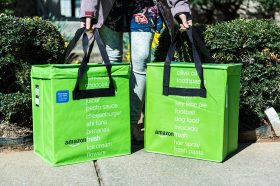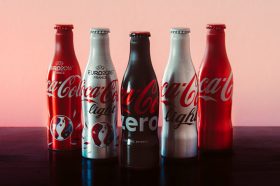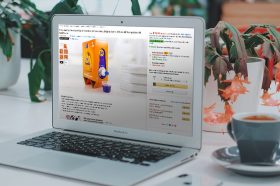Resources - Blog
Amazon Fresh vs. Prime Now

Stay on top of the latest e-commerce and marketplace trends.
Grocery deliveries are on the rise as consumers are spending more time at home to limit exposure to the COVID-19 virus. The Grocery and Gourmet category had the most sales on Amazon and Walmart.com during the Turkey Five in 2020, per Feedvisor data. The high demand for grocery deliveries, even during a period known for consumers purchasing “giftable” items, reveals that the new buyer behavior may be long-lasting.
Prime members are utilizing Amazon Fresh and Prime Now to receive food and pantry goods without leaving their residence. Both services offer consumers fresh and fast grocery deliveries. Shoppers have access to Whole Foods Market’s food assortment on Amazon Fresh and Prime Now. While the grocery delivery services are similar, there are key differences between the two.
Learn how Amazon Fresh and Prime Now stack up, as well as the impact Amazon’s grocery strategy has on sellers.
How Amazon’s Grocery Strategy Impacts Sellers
Before diving into the comparison between Amazon Fresh and Prime Now, it is important to understand how Amazon’s grocery strategy impacts brands and sellers. Amazon stopped selling groceries from third-party sellers on Amazon Fresh in 2018 and the program is currently invitation-only. It is likely that Amazon made the shift in its strategy to gain centralized control over a category that was growing steadily, and is now in high demand.
Amazon Fresh leverages large consumer packaged goods (CPG) brands, in addition to its own private label and goods from Whole Foods Market.. However, brands and sellers that are carried by Whole Foods Market, which are accessible to shoppers on Prime Now, are also eligible to sell on Amazon Fresh.
CPG brands have the upper hand by operating on Amazon Fresh and Prime Now since the programs help drive brand awareness on a widely-used digital platform and enable them to tap into a greater demographic of consumers.
Popular brand names typically rely on brick-and-mortar retailers to provide shelf space that will get their goods in front of shoppers. CPG brands that have been invited by Amazon and sell their inventory on Amazon Fresh or gained access through Whole Foods Market should utilize Sponsored ads to maximize their customer reach.
Price
Amazon Fresh and Prime Now are exclusively available to Prime members without requiring an additional fee. Amazon previously charged members $14.99 per month to use Amazon Fresh, on top of the cost of their Prime subscription. The retailer decided to waive its Amazon Fresh fee in the fall of 2019 to encourage more consumers to use the service and become the go-to destination for grocery deliveries. Prime Now is a service that has been included in the cost of a Prime membership since its launch.
Prime members are able to get free deliveries on Amazon Fresh and Prime Now orders if they meet the $35-minimum threshold ($50-minimum requirement on Amazon Fresh for select regions). Shoppers who purchase groceries that fall under the $35 benchmark are charged a delivery fee of $4.99 on Amazon Fresh and Prime Now.
Fulfillment and Grocery Assortment
Amazon Fresh stores and fulfills grocery orders from Amazon’s warehouse facilities. The food selection on Amazon Fresh is massive and leverages CPG brands (as noted above), such as Progresso, Doritos, and Coca-Cola. Amazon also offers food and pantry goods from Amazon Brand (its private label), as well as inventory from Whole Foods Market, including its 365 Everyday Value brand. In addition to groceries, Prime members can shop for household products, cosmetics, electronics, and more on Amazon Fresh.
Prime Now provides consumers groceries from local stores, including Whole Foods Market. Participating stores, apart from Whole Foods Market, are Bristol Farms, Fresh Thyme Market, Bartell Drugs, and Westside Market NYC. Accessibility to stores vary by region. Consumers in major cities have greater access to stores, which subsequently increases the grocery assortment available. In select areas, Prime members are also able to shop from the Amazon store on Prime Now and can purchase non-grocery items from a larger inventory.
Deliveries and Packaging
Prime members can schedule Amazon Fresh deliveries for the same day, the following day, or a few days ahead of the order date. After selecting the desired date, shoppers will need to choose a two-hour delivery window. Customers are able to receive their goods the same day if they place the order in the morning. Amazon Fresh groceries are delivered in either green totes or brown paper bags. Dry ice or frozen water bottles are included in Amazon Fresh bags for food items that are perishable.
The Prime Now service is superior in speed as it offers Prime members one- to two-hour grocery deliveries. After a store and delivery time is selected, an Amazon shopper will gather the chosen items from the designated market, place the groceries in brown paper bags, and deliver the food to the shopper’s residence. An insulated bag is included for frozen items to help maintain the cold temperature. It is worth noting that although grocery deliveries are free with a $35 purchase, it excludes one-hour deliveries, which require an additional fee of $4.99.
Eligible Locations
Amazon Fresh is available in over 2,000 cities across the United States. Eligible locations include San Francisco, Los Angeles, San Diego, Las Vegas, Seattle, Denver, Dallas, Chicago, Atlanta, Baltimore, Philadelphia, Miami, New York City, Boston, and Washington, D.C.
Prime Now is offered in more than 75 cities in the United States. Eligible regions include San Francisco, Los Angeles, Seattle, Phoenix, Salt Lake City, Austin, Chicago, Nashville, Cincinnati, Atlanta, Cleveland, Miami, Philadelphia, New York City, and Boston.
Final Thoughts
Amazon’s decision to no longer leverage third-party sellers’ grocery assortment on Amazon Fresh created a valuable opportunity for CPG brands. CPG brands are able to drive visibility across Amazon’s huge digital audience, in addition to its offerings in physical stores upon receiving an invitation. Large brands can utilize Sponsored Products ads to reach consumers at scale, nurture shoppers, and subsequently foster brand loyalty over time.
In terms of Amazon’s grocery delivery services, each has its share of advantages and drawbacks. Amazon Fresh has an extensive grocery selection and is available in many locations but it has a longer delivery time. In contrast, Prime Now offers customers fast deliveries, arriving as soon as an hour after the order was placed, yet it is limited in food and pantry items. Consumers are likely gravitating towards the service that aligns with their preference in brands and delivery times. Time will tell if Amazon will build out its grocery offerings to further establish itself in the category.
Learn what Feedvisor can do for your business.
When you partner with Feedvisor, you automatically receive access to our true, AI-driven technology and hands-on team of e-commerce experts. Contact one of our team members today to learn more about our end-to-end solution for brands and large sellers on Amazon, Walmart, and e-marketplaces.



